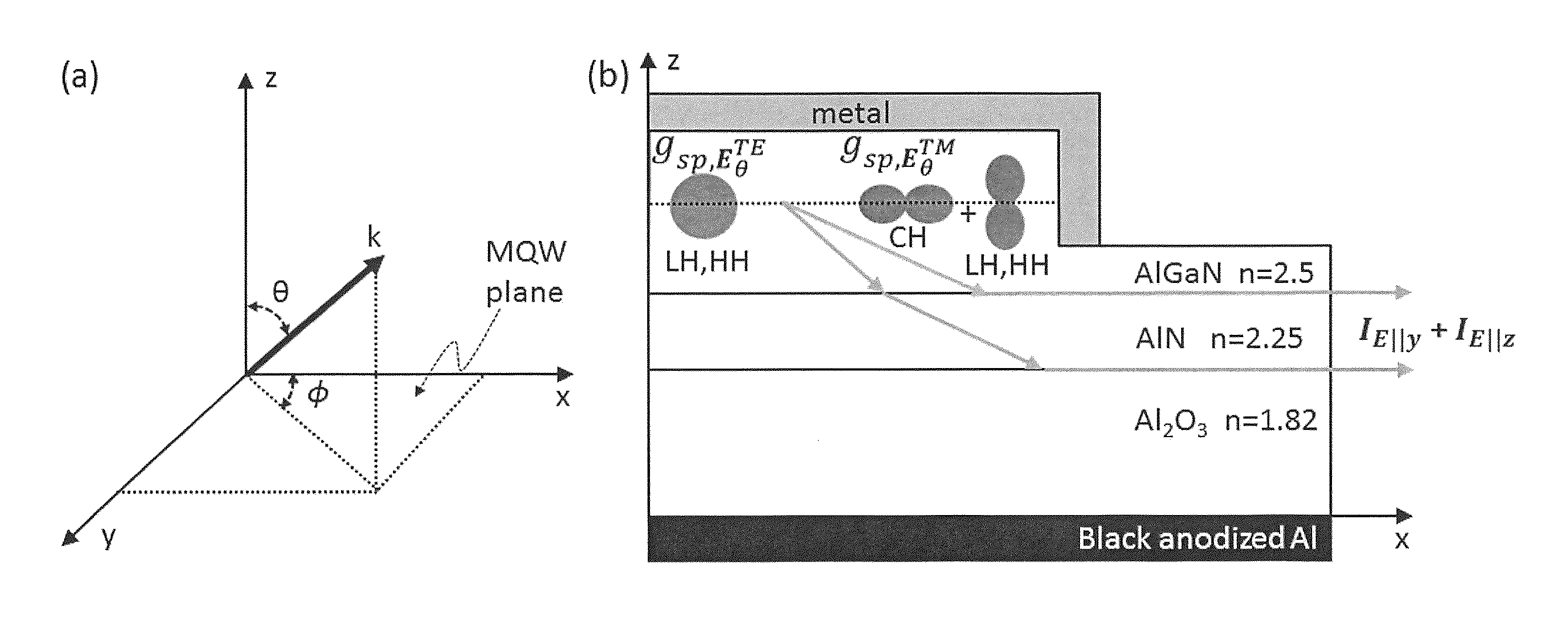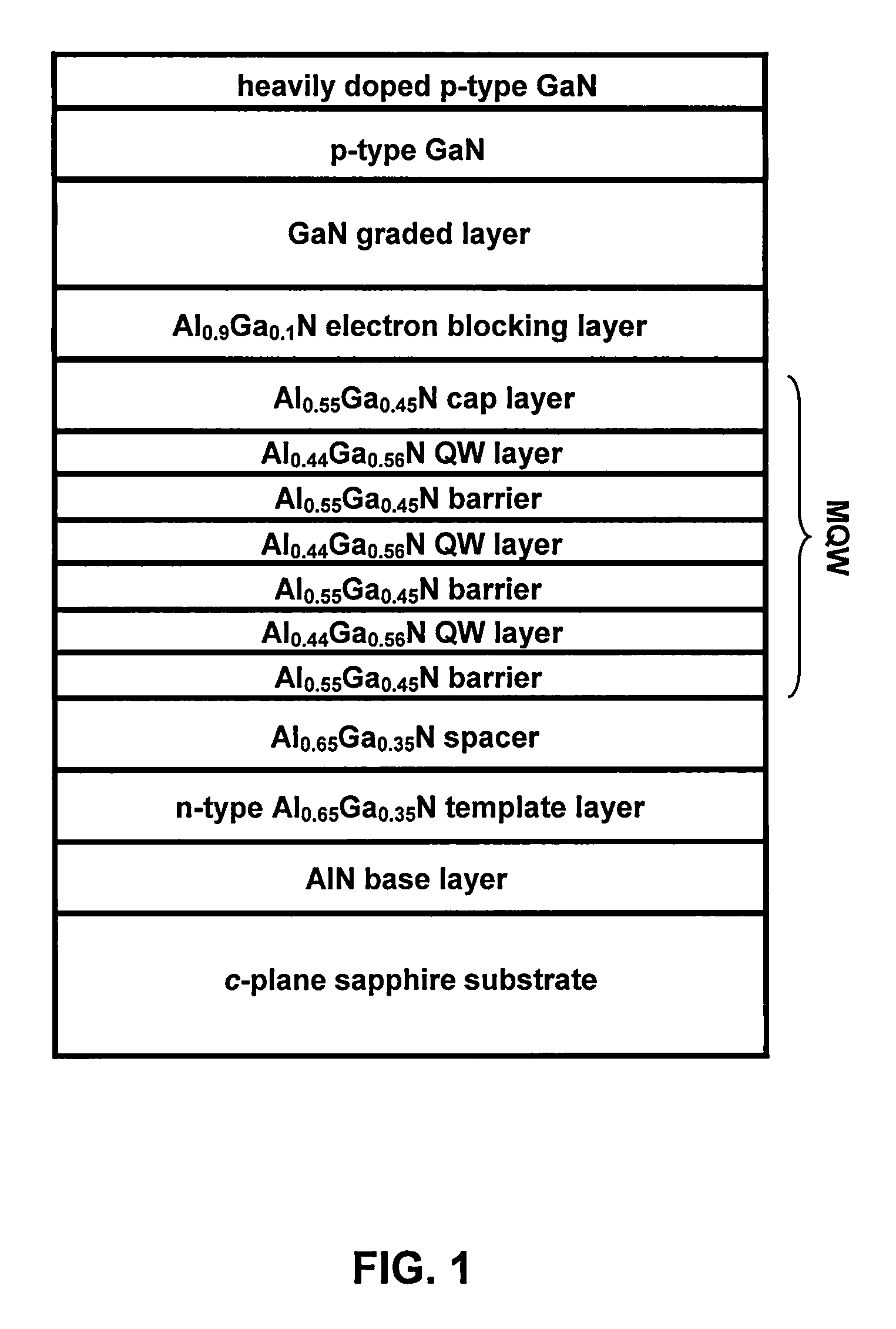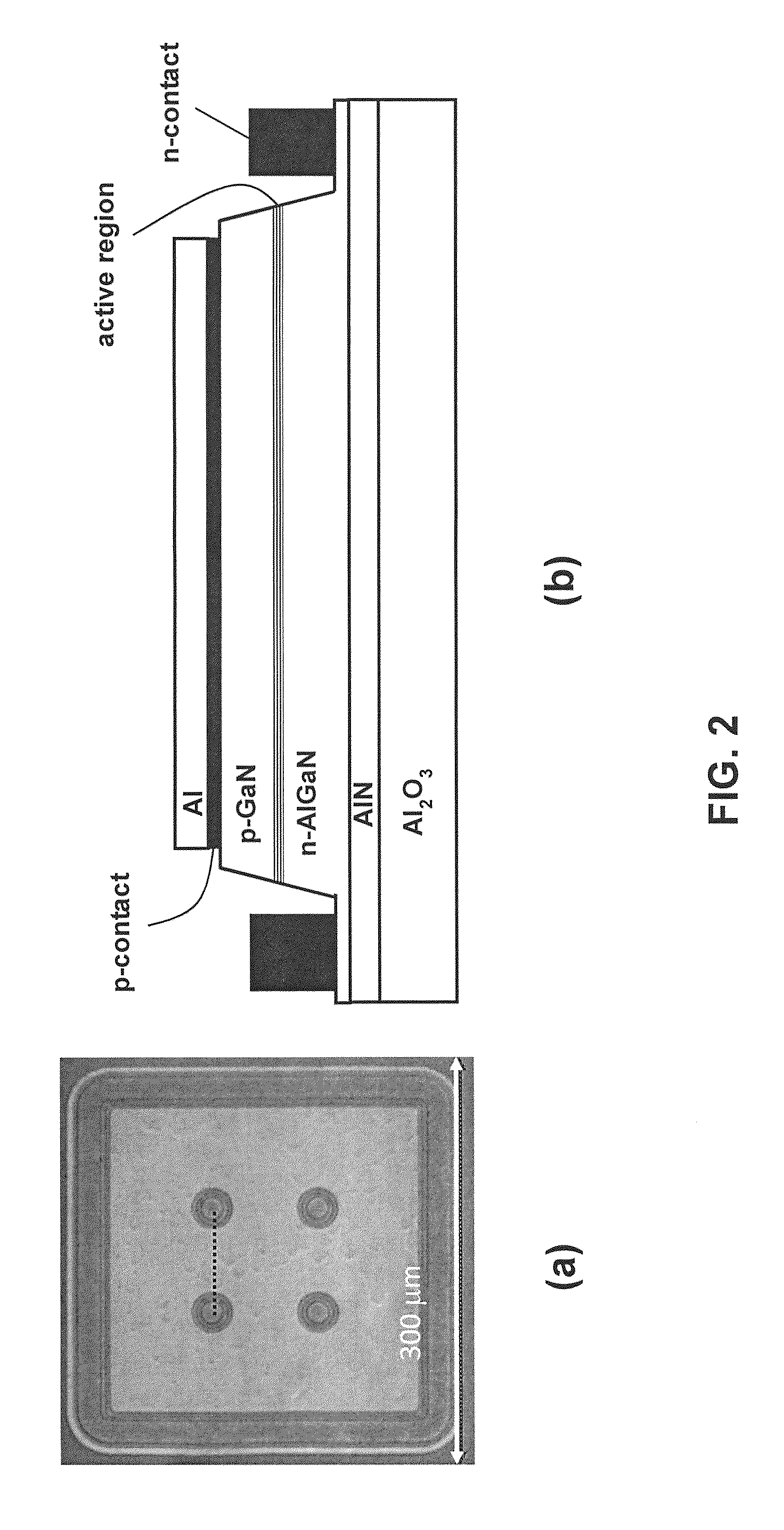High extraction efficiency ultraviolet light-emitting diode
a light-emitting diode, high-efficiency technology, applied in the field of light-emitting diodes, can solve the problems of difficult extraction, high light extraction efficiency, and limited reports on qw thickness dependence, and achieves the effects of reducing carrier density, reducing overlap of conduction band, and high device efficiency
- Summary
- Abstract
- Description
- Claims
- Application Information
AI Technical Summary
Benefits of technology
Problems solved by technology
Method used
Image
Examples
Embodiment Construction
[0025]This invention relates to the design of c-plane AlGaN quantum wells (QWs) to achieve high extraction efficiency in ultraviolet light-emitting diodes (UVLEDs). (Here, AlGaN is understood to mean AlxGa1-xN, where x refers to the Al mole fraction or composition). The polarization of light emitted from AlGaN QWs consists of fractions of light polarized parallel and perpendicular to the QW plane. For efficient light extraction the parallel polarized light is preferred, because it propagates predominately perpendicular to the QW plane and into the typical and more efficient light escape cones. This is favored over perpendicular polarized light that propagates along the QW plane which requires multiple, lossy bounces before extraction. However, control of quantum well composition, thickness, strain, and carrier density is necessary to ensure favorable optical polarization and light extraction. There is interplay between the variables affecting optical polarization that needs to be co...
PUM
 Login to View More
Login to View More Abstract
Description
Claims
Application Information
 Login to View More
Login to View More - R&D
- Intellectual Property
- Life Sciences
- Materials
- Tech Scout
- Unparalleled Data Quality
- Higher Quality Content
- 60% Fewer Hallucinations
Browse by: Latest US Patents, China's latest patents, Technical Efficacy Thesaurus, Application Domain, Technology Topic, Popular Technical Reports.
© 2025 PatSnap. All rights reserved.Legal|Privacy policy|Modern Slavery Act Transparency Statement|Sitemap|About US| Contact US: help@patsnap.com



